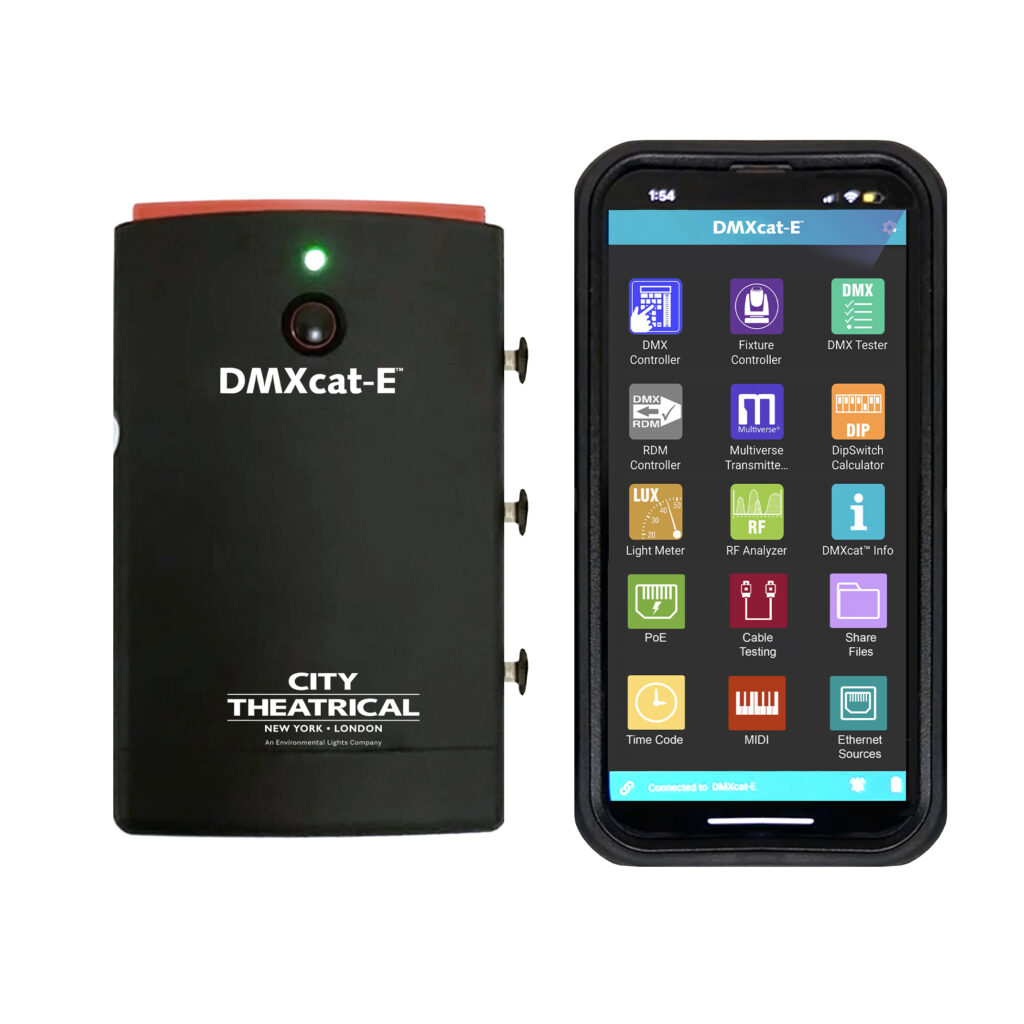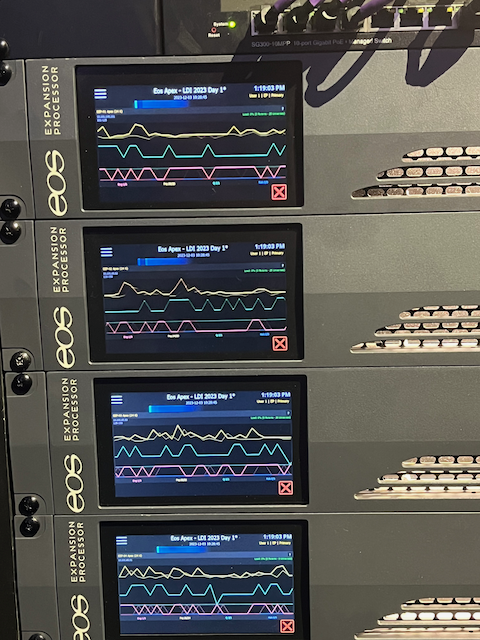I attended LDI this week, and as usual it was a great time. Lots of great people and gear. For those who were unable to attend, here is a totally subjective list of my top things of interest. Perhaps interestingly, all three products feature networking. All are announced, none are yet released.
DMXcat-E

Any tool that truly helps me troubleshoot a system is going to win my heart. This is exactly that. The DMXcat-E takes all of the functionality from the DMXcat and adds so much more. Networking functions including pinging, sACN and Arnet viewing and sending, POE voltage analysis, and is already prepped for future use with RDMnet included. Other functions include cable testing (DMX and RJ45), SMPTE LTC read, MIDI read, a light, a buzzer (for when you misplace it) and USB C charging. A battery life of 17 hours on a single charge round this out to be my new “I refuse to do another load in without it” tool. Shipping is expected in April and the cost is supposed to be $650.
ETC Eos Expansion Processor

Oooooooh, y’all! This is gonna be huge. Up to now, Eos has only been able to have one console, regardless of how many are on the network, calculate all of the DMX outputs. When the 3.3 software gets released, that will no longer be true. The data is a little vague since they are still testing limits of the systems, but we will now be able to distribute processing across multiple devices. Classic consoles are excluded, but even the little IonXE will get the ability to increase output via the EEP- the Eos Expansion Processor. Each unit unlocks 24 universes and was deliberately created to be priced “lower than a console”. If you already own an Apex Processor Unit, you will be able to combine multiple together into one session. In my works, I’m already running 60 universes of data fairly often, so this is a big deal. The software and hardware is in alpha testing, so hopefully 6-9 months from now, we will get to unlock new possibilities!
Netron NS8 and NS8 IP

For what feels like an eternity, entertainment network switches have been only for the top 1%. No more. Built from the ground up (including the chip design) for entertainment protocols, these switches are easy to configure, robust and cost effective. Reported to start at $600 with the IP65 variant coming in at $800, this gives strong networking switches to a much wider range of entertainment people. And best of all, when you call in for tech support for your switches, entertainment people will be on the other end of the call. No more starting by explaining what sACN is and how it uses/misuses multicast. They’ll already know. Reported to be released in the second quarter of 2024, I literally can’t wait.
I hope you enjoyed my very brief list of my top things from LDI. If you were there, or were checking out the product release emails, let me know what you are most excited for in the comments.